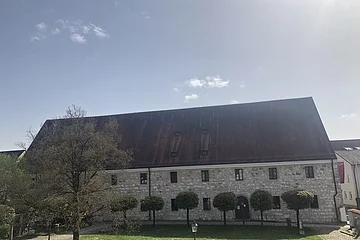The ″Herzogkasten″ (Ducal Warehouse) in Kelheim stands as a magnificent testimonial to the region’s rich history and proud architectural heritage. Constructed in the late 15th century, the warehouse was originally built to store taxes for the duke, which were paid sometimes in monetary form, but mostly in the form of goods like grain, beer and wood. After the building was no longer used for the storage, the ″Herzogkasten″ was repurposed as barracks, where soldiers, where soldiers could live in times of war.
One of the most significant chapters in the history of the warehouse started by the end of the Second World War. With large parts of Germany lying in ruins and millions of people having been displaced from their homes, the building was used as a temporary shelter for refugees. When times became more peaceful, the Ducal Warehouse was transformed once again and was used as a high school for the local community in the years from 1948 to 1969. Generations of students went through its doors, receiving a high-quality education within the historic walls of the warehouse.
In recent years (the official opening was in 1981), the ″Herzogkasten″ has been turned into a museum (″Archäologisches Museum″), which keeps our history alive. In the wide span from its origins as a mere storage facility to housing refugees, educating high school students and now preserving history, the Ducal Warehouse continues to play a vivid and important role for the city of Kelheim.
An additional attraction of the ″Herzogkasten″ is the beautiful courtyard found in front of the entrance with many trees and benches, where you can take a break after a long and exciting day of sightseeing.


